Our Top 10 Articles Of 2022!
Yash Bansal
Posted On: January 31, 2023
![]() 75630 Views
75630 Views
![]() 13 Min Read
13 Min Read
As the world continues to navigate the ongoing challenges brought about by the pandemic, the past year was marked by significant events and developments. From technological advancements to global economic shifts, 2022 was filled with change and growth.
In the testing world, web automation and mobile testing have emerged as crucial tools for businesses and organizations seeking to develop new products and services. So, in the years to come, technological development will still be a driving force behind digital transformation.
With this in mind, we present the “Top 10 Articles of 2022”, a compilation of the most impactful and thought-provoking pieces of the year. The articles included in the list delve deep into the issues that developers and testers face daily. These challenges range from technical problems like debugging complex code to organizational issues like managing deadlines and working with cross-functional teams. The articles examine these challenges from different perspectives, offering practical solutions and best practices to help developers and testers overcome these obstacles and become more productive and effective in their work.
Whether you’re a seasoned developer or just starting in the field, these articles provide valuable insights and guidance on the most common challenges developers and testers face. By exploring these issues, you will gain a deeper understanding of the industry and the tools and techniques needed to succeed in software development and testing.
So sit back, grab a cup of coffee, and dive into the top 10 articles of 2022!
TABLE OF CONTENTS
- How To Perform Modern Web Testing With TestCafe Using JavaScript And Selenium
- Playwright Tutorial: Getting Started With Playwright Framework
- Getting Started with SpecFlow Actions [SpecFlow Automation Tutorial]
- A Complete Guide To CSS Grid
- Cypress End-to-End Testing Tutorial: A Detailed Guide
- How To Perform Cypress Accessibility Testing
- Complete Tutorial On Appium Parallel Testing [With Examples]
- How To Automate Using TestNG In Selenium? [TestNG Tutorial]
- How To Run JUnit Tests In Jupiter? [JUnit Jupiter Tutorial]
- How To Use WebDriverManager In Selenium
- Wrapping Up!
- Which article did you adore the most?
1. How To Perform Modern Web Testing With TestCafe Using JavaScript And Selenium
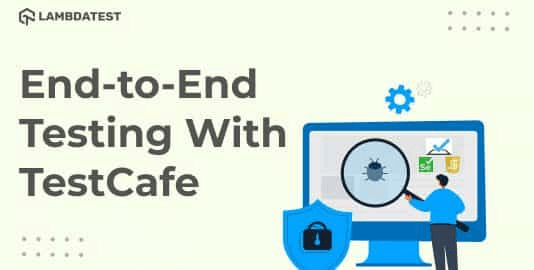
TestCafe is a JavaScript-based browser testing tool that uses a simple and intuitive syntax that helps developers to write tests faster and run on multiple different browsers and OS from anywhere in the world. Selenium is a popular open-source automation testing tool that developers and testers commonly use to automate the testing of websites and web apps on multiple browsers.
When it comes to testing web applications, there’s no room for error. That’s why, in today’s complex software development landscape, web testing is a vital step to ensure an application works as expected. Automation tools, like Selenium and TestCafe combined, create a powerful solution for modern web testing. This tutorial will help you understand how to perform modern web testing with TestCafe using Selenium.
2. Playwright Tutorial: Getting Started With Playwright Framework

Playwright is a framework developed and maintained by Microsoft that contains Node.js library, which allows developers to automate web browsers or web pages like Selenium or Puppeteer, but it is designed to be faster and more reliable. It provides a simple and intuitive API for automating browser interactions, allowing developers to perform actions such as clicking on buttons, filling out forms, and navigating between pages. Moreover, Playwright also supports parallel testing, allowing developers to run multiple tests without interference.
There are several reasons why developers may choose to use the Playwright framework over other frameworks for automating web browsers.
There are several reasons why developers may choose to use the Playwright framework over other frameworks for automating web browsers.
- Speed and reliability
- Cross-browser support
- High-level API
- Headless browsing support
- Build-in debugging tools
With these features, Playwright holds a unique identity among developers. If you are a newbie and want to explore Playwright, check out our article on getting started with Playwright framework.
3. Getting Started with SpecFlow Actions [SpecFlow Automation Tutorial]
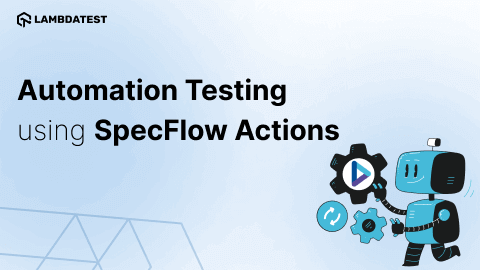
Behavior-Driven Development (BDD) is a software development methodology that emphasizes collaboration between product owner (stockholder), developers, project managers, QAs, and user acceptance testers to come together to understand the requirements of the application and ensure that they are met through the development process.
SpecFlow Actions are a way to define the steps of a scenario in a BDD testing process. They are written in C# language or any other .NET-supported language that uses Gherkin syntax. These actions allow developers to write automated tests in a way that is easy to understand for non-technical stakeholders and to ensure that the application behaves as expected.
Want to know how to get started with SpecFlow Actions? Read our article and boost your knowledge on performing these actions on the cloud grid. To learn more about SpecFlow, please go through our video from the LambdaTest YouTube Channel on how to learn SpecFlow in 40 minutes.
4. A Complete Guide To CSS Grid
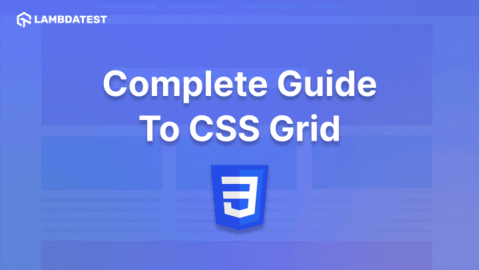
Prior to the introduction of CSS Grid, there were many challenges faced by developers who had to rely on a combination of different CSS layout techniques such as floats, positioning, and flexbox to create grid-based layouts. These methods had their limitations, such as the lack of a true two-dimensional layout system, the difficulty of creating nested grid layouts, and the lack of control over the placement of elements on the page, thus making it difficult to create complex and responsive designs.
Later when CSS Grid was introduced, i.e., a powerful layout system that helps developers to create flexible and responsive grid-based layouts using CSS. It allows creating complex, nested grid layouts easily and gives developers a high degree of control over the placement of elements on the page, making it easy to create layouts that adapt to different screen sizes and orientations.
Check out our article on the complete guide to CSS Grid if you want to expand your understanding and proficiency with CSS Grid. This article will help you better understand how to use CSS Grid to make flexible and responsive grid-based layouts and how to create intricate, nested grid layouts easily. Therefore, read our article right away to advance your skills. Don’t wait any longer!
5. Cypress End-to-End Testing Tutorial: A Detailed Guide
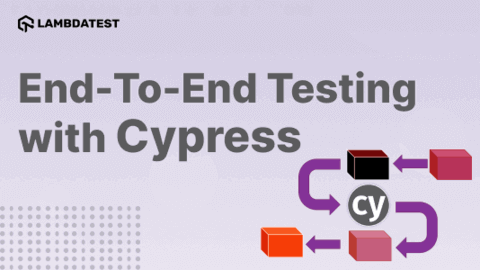
Cypress is a popular end to end testing framework among developers that aids in testing web apps in a real browser environment. Cypress runs the application in the browser, giving the experience as if it is actually running in the browser. It also supports the integration with various testing frameworks such as Mocha, Jest, and Jasmine, which allows developers to run their tests in parallel, which speeds up the testing process.
End-to-end testing with Cypress involves testing the entire flow of a web application from start to finish, simulating the actions of a real user. It is carried out to ensure that the web application behaves as expected and that there are no compatibility issues with different browsers. When performing end-to-end testing with Cypress, developers can write test scripts that simulate user interactions with the web application, such as clicking buttons, filling out forms, and navigating between pages.
Our article offers a thorough overview of Cypress, including its features, advantages, and use cases, so you can become proficient in end-to-end testing with Cypress. In-depth examples and code snippets are also included to help you learn how to use Cypress to test your web applications from beginning to end. Don’t put off testing your web applications; read our article on end to end testing with Cypress now.
6. How To Perform Cypress Accessibility Testing

Accessibility testing is the process of ensuring that digital products and web applications are usable by people with special abilities and that they adhere to accessibility standards and guidelines like the Web Content Accessibility Guidelines (WCAG). This includes testing to ensure that users with visual, auditory, motor, and cognitive impairments can use the program or product.
Accessibility testing with Cypress involves using the Cypress framework to test web applications for accessibility issues, using its powerful API, built-in assertion library, and integration with various testing frameworks. Cypress’s ability to test web applications in a real browser environment and its built-in assertion library makes it a valuable tool for automating accessibility testing of web applications and ensuring they meet the requirements of accessibility guidelines and standards.
Are you struggling to understand how to perform accessibility testing with Cypress? Our article on how to perform Cypress accessibility testing can help. It covers everything from setting up Cypress to using its built-in commands and assertion library to test for accessibility issues.
7. Complete Tutorial On Appium Parallel Testing [With Examples]
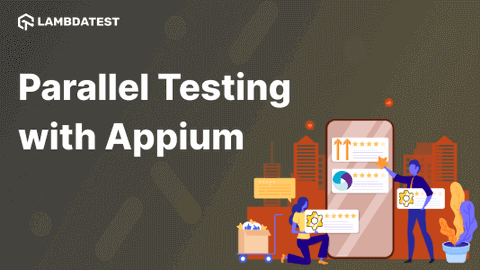
Developers can test mobile apps across different platforms by using a single API, thanks to the open-source mobile automation tool known as Appium. The Android and iOS operating systems are supported and communicate with mobile applications using the WebDriver protocol. Parallel testing, integration with various testing frameworks, a wide range of programming languages, and cloud-based testing services are all supported by Appium.
Parallel testing is a technique that allows developers to run multiple tests and execute simultaneously on different machines or environments, which in turn reduces time and thereby improves the efficiency of the testing process. On the other hand, Appium parallel testing is another technique that allows developers to run multiple Appium tests simultaneously on different machines or environments, which can significantly improve the efficiency of the testing process.
Mobile app testing can be time-consuming and difficult, especially across various platforms and devices. By giving you a thorough tutorial on how to use Appium to conduct parallel testing, our article on Appium Parallel Testing can assist you in overcoming this. From installing Appium and utilizing its parallel execution feature to integrating with different testing frameworks and cloud-based services, it covers it all.
8. How To Automate Using TestNG In Selenium? [TestNG Tutorial]
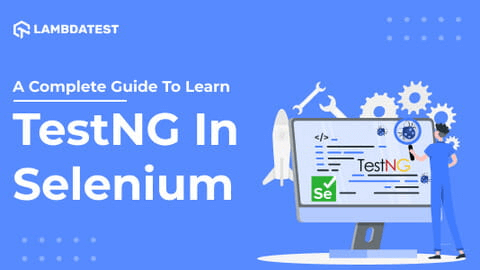
An open-source testing framework called TestNG, which draws inspiration from JUnit and NUnit, is made to carry out many types of testing, including unit, functional, and integration testing. TestNG includes test parameterization and dependency injection, which make it simple to transmit information between test methods and manage test dependencies. These features enable developers to execute several test cases concurrently.
Automating using TestNG in Selenium is a powerful and efficient way to perform functional and regression testing on web applications. In order to automate their testing procedure with Selenium, developers can use TestNG and take advantage of its comprehensive feature set, which includes test groups, data-driven testing, and parallel test execution.
If you’re looking to learn how to automate your testing process using TestNG and Selenium, our article on how to automate using TestNG in Selenium is an excellent resource. It covers everything from installing TestNG and Selenium in your project to creating test cases, data-driven testing, parallel test execution, and more, making it a valuable tool for automating your testing process.
9. How To Run JUnit Tests In Jupiter? [JUnit Jupiter Tutorial]

The JUnit testing framework’s next iteration is called JUnit Jupiter. Developers are given access to the Jupiter TestEngine, a test engine that runs JUnit Jupiter tests on the JUnit Platform. Finding, loading, and running the tests are done by the Jupiter test engine.
Running JUnit tests in Jupiter allows developers to take advantage of the Jupiter engine and its features, such as parameterized tests, nested tests, and dynamic tests. To run JUnit tests in Jupiter, you need to use the JUnit Jupiter TestEngine along with the Jupiter API. And also Jupiter test plan model provides the ability to access and analyze the test results.
If you need help understanding how to run JUnit tests in Jupiter, then our article can help you. It covers the basics of Jupiter, its unit testing capabilities, and how you can run JUnit tests in Jupiter.
For Java developers, LambdaTest provides free JUnit certification, which can help advance your testing and development career. Enroll Right Away!
10. How To Use WebDriverManager In Selenium

In order to manage WebDriver binaries for Selenium WebDriver, a library called WebDriverManager is used because it downloads and updates the necessary WebDriver binary files for the browser of your choice automatically, manual configuration and setup are no longer necessary. Chrome, Firefox, Opera, Microsoft Edge, and Internet Explorer are just a few of the browsers it supports.
In today’s fast-paced software development environment, it’s important to stay up-to-date with the latest tools and techniques for testing. To use WebDriverManager in Selenium, you need to add the WebDriverManager dependency, import the WebDriverManager class, configure and download the WebDriver binary and create an instance of the WebDriver class to interact with the browser. By reading our article, you can leverage the power of WebDriverManager and improve your Selenium tests, saving you time and effort.
Wrapping Up!
In conclusion, the year 2022 brought many advancements in software testing. From end-to-end testing with TestCafe and Cypress to accessibility testing and parallel testing with Appium and automating using TestNG and Selenium, these top 10 articles of 2022 provided a wealth of information on the latest techniques and technologies for software testing.
Additionally, the articles on CSS Grid and Playwright, as well as on WebDriverManager and JUnit Jupiter, gave insight into how to improve the layout of web pages and automate browser interactions. The field of software automation testing is constantly evolving, and these articles provide valuable resources for staying up-to-date with the latest trends and best practices.
Which article did you adore the most?
This concludes our list of the top 10 articles of 2022. We would like to express our sincere gratitude to you and our dear readers for their love and support throughout this historic year.
And which article did you find most interesting among the top 10 articles of 2022? Please let us know in the comments section.
In 2023, we’ll publish many more intriguing blogs for our testing community. So, stay tuned to the LambdaTest blog. You can also check out the LambdaTest Learning hub, a free resource for users, customers, and readers, to brush up your knowledge on Playwright testing, mobile app testing, cross browser testing, and other topics.
Happy Testing!❤️
#LambdaTestYourApps
Got Questions? Drop them on LambdaTest Community. Visit now















